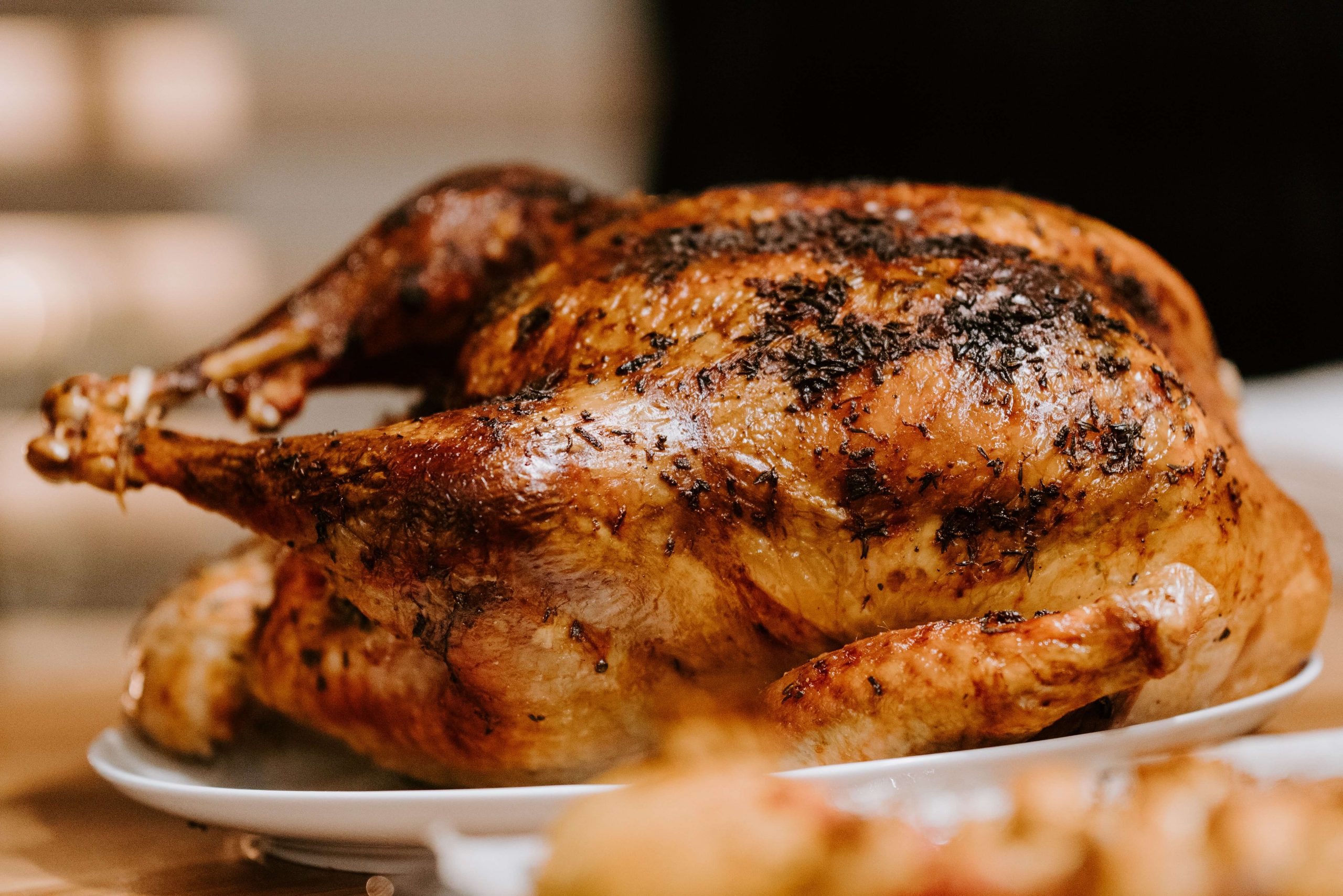I’ve often found myself staring at a package of chicken in my fridge, wondering if it’s still safe to eat after the use by date. It’s a common predicament that many of us face, especially when we’re trying to reduce food waste. So, can you eat chicken after its use by date? Well, it’s not as simple as a ‘yes’ or ‘no’.
The ‘use by’ date is essentially the manufacturer’s way of telling you when the product will be at its peak quality. It doesn’t necessarily mean that the food is unsafe to eat after this date, but it might not taste as good. However, with something like chicken — which can harbor harmful bacteria — there are other factors you need to consider.
In general, I’d advise against eating chicken past its use-by date. Food safety should always take precedent over avoiding waste. While your poultry may look and smell fine, there could be harmful bacteria lurking that can make you seriously ill. If you’re really unsure about whether or not your chicken is still good to eat, there are some signs you can look for.
The Importance of Food Safety
We’ve all been there, haven’t we? Staring at a package of chicken in our fridge, the ‘use by’ date just a day or two past. I’m sure you’ve wondered, “Can I still eat this?” Well, before we dive into that question, let’s first discuss why food safety is so crucial.
Proper Handling and Storage of Chicken
Handling and storing chicken properly is fundamental to food safety. Why’s that? Raw chicken can harbor harmful bacteria like Salmonella and Campylobacter. If it’s not stored correctly – ideally below 40°F (4°C) – these bacteria can multiply rapidly, increasing your risk of foodborne illnesses.
The way you handle raw chicken during preparation also matters immensely. Always wash your hands before and after handling raw poultry. And keep in mind that it should never come into contact with ready-to-eat foods or kitchen surfaces.
Understanding Use By Dates on Food Products
Here’s something important: ‘Use by’ dates are not arbitrary numbers pulled out of thin air! They’re determined by food scientists who study how quickly bacteria grow on different types of food products under various conditions.
A common misconception is that these dates are about the quality of the product – but they’re actually about safety. When a ‘use by’ date passes, it doesn’t mean the food will instantly become unsafe to eat; instead, it signifies that from this point forward, the risk starts to increase.
Signs of Spoiled Chicken
Knowing how to spot spoiled chicken is another key aspect of ensuring food safety. It’s not always as straightforward as you might think! Here are some telltale signs:
- Change in color: Fresh chicken typically has a pinkish hue; if it turns greyish-blue or greenish-yellow, steer clear!
- Unpleasant odor: A strong smell isn’t normal for fresh meat; if your nose wrinkles when you open the package – trust your instincts.
- Slimy texture: If raw chicken feels sticky or slimy to touch even after rinsing it under water – time to toss it!
So circling back around to our original question: can I eat that slightly overdue packaged chicken? My advice? It’s better safe than sorry!
Understanding Expiration Dates
It’s important to understand what expiration dates really mean, especially when it comes to perishable items like chicken. Contrary to common belief, the “use by” date isn’t a hard and fast rule that warrants immediate disposal of the item. Rather, it’s a guideline provided by manufacturers for peak quality. Now, let’s delve deeper into how you can determine if your chicken is still safe to eat after this date.
How to Determine if Chicken is Safe to Eat After the Use By Date
Firstly, remember that your senses are your best tools. If the chicken looks off-color or has a strange smell or texture, then it’s likely unsafe for consumption. Another sign could be sliminess or stickiness on its surface. Trust me; you don’t want food poisoning from old chicken!
However, bear in mind that harmful bacteria like Salmonella and Campylobacter aren’t detectable through sight and smell alone. Therefore, always ensure that your poultry is properly cooked at a temperature of 165°F (74°C) as per USDA guidelines.
Common Mistakes to Avoid when Consuming Chicken Past the Use By Date
Eating chicken past its use-by date does have potential risks which can be mitigated with proper care:
- Don’t rely solely on freezing: While freezing extends shelf-life significantly, it doesn’t kill bacteria but merely halts their growth.
- Don’t underestimate cooking temperatures: As mentioned earlier always cook poultry at minimum 165°F (74°C).
- Don’t ignore storage conditions: Incorrectly stored poultry may spoil faster even before reaching its use-by date.
Delicious Recipes for Using Leftover Chicken Past the Use By Date
For those leftover pieces of chicken sitting in your fridge beyond their prime time here are some delicious recipe ideas:
- Chicken Broth: Boil bones and leftovers in water with salt and spices till flavorful broth is obtained.
- Chicken Pot Pie: Shredded older chicken works great inside these savory pies.
- Chicken Salad: Chunks of leftover grilled/baked chicken add protein punch to salads.
Remember though – safety first! Always inspect your leftovers thoroughly before repurposing them into these mouth-watering dishes!
What Does ‘Use By’ Date Mean?
So, you’ve got a pack of chicken sitting in your fridge and the ‘use by’ date is yesterday. Panic sets in – can you still use it?
Is It Safe to Eat Chicken After the Use By Date?
The ‘use by’ date on food packaging, including chicken, is there for our safety. It’s important to understand that this date indicates when the food is at its peak freshness and safe for consumption. After this day passes, the quality of the product begins to decline and bacteria may start to grow. While it might not be immediately harmful, consuming chicken after its ‘use by’ date carries certain risks.
For example, if we look at statistics from the Centers for Disease Control and Prevention (CDC), they estimate that each year 48 million people get sick from a foodborne illness. Some of these illnesses are due to consuming foods beyond their ‘use by’ dates.
Factors to Consider Before Consuming Chicken Past the Use By Date
If you’re contemplating whether or not to eat that chicken past its ‘use by’ date, there are several factors you should consider:
- Smell: If your nose wrinkles at an off-putting odor when opening the package, it’s a clear sign that your chicken has seen better days.
- Color: Fresh chicken should have a pinkish hue; if it’s turned grey or greenish-blue, steer clear.
- Texture: Sliminess or stickiness on raw chicken isn’t normal – don’t risk it!
Remember: When in doubt, throw it out!
Tips for Safely Eating Chicken Beyond the Use By Date
While I’m stressing caution around eating expired chicken here (and rightly so!), there may be situations where consuming meat shortly after its ‘use-by’ date could be potentially safe — but only with proper handling! Here are some tips:
- Proper Storage: From store-to-fridge transport time until cooking moment – keep your poultry refrigerated below 40°F.
- Freezing: You can extend shelf life significantly by freezing your poultry prior to its use-by-date.
- Cook thoroughly: Always ensure your poultry reaches an internal temperature of 165°F as per USDA guidelines.
Keep in mind though: these tips don’t guarantee safety; they merely reduce risks. Don’t rely solely on them when dealing with older poultry!
Factors to Consider Before Consuming Expired Chicken
Before we dive into the heart of this matter, it’s essential to note that food safety is not something to be taken lightly. Now, let’s get started on our discussion about consuming expired chicken.
Potential Health Risks of Consuming Expired Chicken
Chicken is a protein-rich food, but once past its use-by date, it can become a breeding ground for harmful bacteria like Salmonella and E. coli. These bacteria can cause severe illnesses such as food poisoning or worse.
Here are some stats:
- The CDC reports that each year 48 million people in the U.S. get sick from a foodborne illness
- 128,000 are hospitalized
- And sadly around 3,000 die
These numbers illustrate why it’s crucial not to underestimate the risks associated with consuming expired chicken.
The Importance of Properly Inspecting Expired Chicken
My advice here is simple – don’t play Russian roulette with your health! If you’ve got chicken that’s past its use-by date, inspect it carefully before even considering consuming it.
Look out for these signs:
- Does it smell off? Fresh chicken has a light poultry scent.
- Is there any visible mold or sliminess?
- Has the color changed drastically?
If you notice any of these indicators, toss away the chicken without hesitation!
Alternative Ways to Use Expired Chicken Safely
Now I’m not saying you should always throw away expired chicken; sometimes there might be alternative ways to utilize it safely.
For instance:
- Composting: Yes! You heard me right. Provided your compost bin is well managed and reaches high enough temperatures to kill pathogens.
- Pet Food: Some pet owners cook up expired meats (under proper temperature) for their pets as an occasional treat (after consulting with their vets).
Remember folks! It all boils down to ensuring safety first when dealing with potentially spoiled foods like expired chicken. So make sure you’re making informed decisions based on sound judgment and don’t put your health at risk unnecessarily!
Signs of Spoiled Chicken
It’s time to discuss a crucial part of the chicken consumption process: recognizing the signs of spoiled chicken. This knowledge can save you from potential foodborne illnesses.
Firstly, I’ll point out that your eyes and nose are your best tools here. Fresh chicken has a light pink hue and little to no smell. If it’s starting to go bad, you might notice some changes in color. The skin could start turning grayish or greenish, which is definitely not what we’re looking for in good-quality poultry.
Another key sign is texture change. Fresh chicken should feel moist but not slimy. If it feels sticky or slimy even after you’ve rinsed it under cold water, that’s another major warning sign.
Now let’s talk about smell – probably the most telling signal of all:
- Fresh Chicken: Will have mild or even no noticeable odor.
- Spoiled Chicken: Begins to smell sour, pungent like ammonia or sulfur.
If you come across any of these signs while inspecting your chicken, my advice is simple: don’t eat it! Better safe than sorry when it comes to food safety.
But remember, none of these checks replace the importance of paying attention to expiration dates. While use-by dates aren’t absolute indicators of spoilage (chicken may spoil before if improperly stored), they’re solid guidelines provided by food experts for our safety.
As an expert blogger on this topic, I’ve emphasized these points due to their importance despite sounding repetitive at times: Always check your meat thoroughly before cooking and consuming!
Read also:
Does Pineapple Belong On Pizza? Guess what…
What Oil Does Chipotle Use? You’ll be surprised!
Is Canned Spinach Good For You?
Can I Eat A Small Potato On Keto?
Does Buffalo Sauce Have Gluten?


